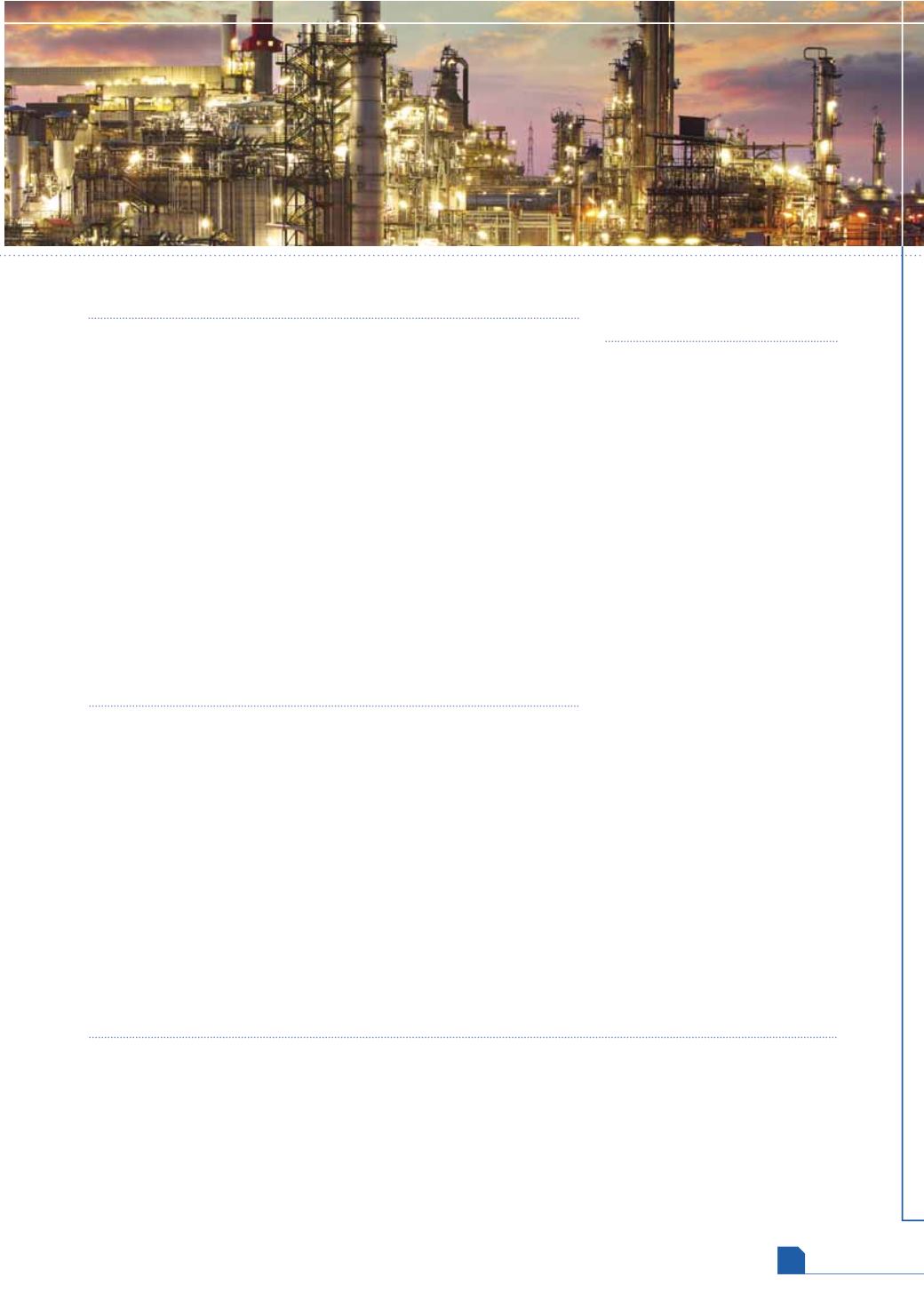
WORLD NEWS
March
2017
HYDROCARBON
ENGINEERING
5
China |
MTO unit
started
J
iangsu Sailboat Petrochemical Co.
Ltd has started its UOP Advanced
methanol-to-olefins (MTO) unit
during a 10-day test to confirm
successful operation, according to
Honeywell. When the full unit goes
online, it will have a production
capacity of 833 000 tpy, making it
the largest single-train MTO unit in
the world.
The Sailboat facility, located in
Lianyungang City in Jiangsu Province,
will produce propylene for the
production of acrylonitrile, which is
used to make clothing and fabrics,
and high performance polymers used
in automotive parts, hard hats and
other hard plastic products. The plant
will also produce ethylene for the
production of ethylene vinyl acetate
copolymers, as well as C
4
olefins.
The Advanced MTO process
converts methanol from coal and
natural gas into ethylene and
propylene. UOP's proprietary
catalysts make it possible to
efficiently adjust the ratio of
propylene and ethylene produced so
operators can most effectively meet
demand for those products.
When fully completed, the
500 ha. facility will produce
approximately 2.5 million tpy of
short-supply high-end petrochemical
products.
Qatar |
Laffan Refinery 2 inaugurated
Q
atargas has announced that His
Highness Sheikh Tamim bin
Hamad Al-Thani, the Emir of the
State of Qatar, has inaugurated
Laffan Refinery 2 at a special
ceremony held at the Qatar National
Convention Centre.
The inauguration of the refinery
marks the culmination of a strategic
expansion to Qatargas’ facilities in
Ras Laffan Industrial City, effectively
doubling Qatar’s condensate refining
capacity to 292 000 bpd.
The new refinery processes
condensate to produce five high
quality products. These products
support the energy and industry
sectors by providing energy sources
and raw feedstock material, namely
naphtha, kerojet (A-1), diesel and LPG
in the form of propane and butane.
It also creates new economic
opportunities by enhancing export
capacity and therefore the ability to
supply international demand for
energy.
Laffan Refinery 2 includes a
wastewater recycling facility, which
treats industrial water from Laffan
Refinery 1 and Laffan Refinery 2.
USA |
HEP to expand deep-water terminal
H
oward Midstream Energy
Partners LLC (HEP) has executed
a long-term terminal services
agreement (TSA) with a third-party
shipper and plans to significantly
expand its bulk liquids terminal
facility in Port Arthur, Texas.
Under the TSA, HEP will
construct or install more than
15 new tanks, adding more than
1 million bbls of storage for a variety
of products, and construct new
marine facilities for both blue water
and inland marine vessels.
Additionally, the company plans to
construct a pipeline system to
transport products between the
Port Arthur facilities and other
third-party supply points.
Permitting for the development
of the terminal began in 1Q16. Final
engineering of the facilities and
pipelines is underway and
construction is expected to begin in
March 2017. The facility is projected
to take 18 months to construct and
operations are expected to begin in
2018.
Worldwide |
OPEC production cuts promising
T
he International Energy Agency
(IEA) has estimated that OPEC
production in January 2017 was
32.1 million bpd, and that the
production cuts achieved a record
initial compliance rate of 90%.
Notably, some producers, including
Saudi Arabia, appeared to cut more
than required.
Speaking at the International
Petroleum (IP) Week conference in
London, UK, OPEC Secretary General,
HE Mohammad Sanusi Barkindo, said
that the implementation of
production cuts by OPEC and
non-OPEC members has thus far
been very encouraging.
Mr Barkindo said that all
24 countries involved had remained
resolute in their commitment to
the ongoing process and are
determined to implement their
obligations in a full and timely
fashion to help ensure a more
balanced oil market on a
sustainable basis. He also said that
the establishment of the Joint
Ministerial Monitoring Committee
and the supporting Joint Technical
sub-Committee to oversee and
monitor implementation were
"prime examples of OPEC’s support
for data sharing, openness and
transparency.”








